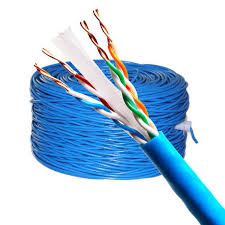In an era where technological advancements occur with lightning-fast speed ensuring your network infrastructure can keep up. Even though CAT5 cableshave been a standard option for wiring networks, their role in future-proofing your network is nuanced. Here’s the way CAT5 cables are incorporated into the landscape in future-proofing your network as well as the issues to be considered.
1. Understanding CAT5 Capabilities: CAT5 cables, introduced in the 1990s’ early years, offer network speeds as high as 100 Mbps. They are also specifically designed to operate at frequencies of up to 100 MHz. They’re sufficient for the most basic tasks in networking, like browsing the web and streaming video at standard resolutions. However, as the speed of internet and network demands grow, CAT5 cables may become a limiting factor.
2. Comparing to Newer Standards as technology improves, newer cable standards such as CAT5e, CAT6 and CAT6a provide better performance. CAT5e is an upgraded version of CAT5 is able to support gigabit speeds (1 Gbps) and is better at reducing crosstalk which makes it better suited for modern networking needs. CAT6 and CAT6a further increase performance, allowing speeds as high as 10 Gbps across short distances and frequencies up to 250 millimeters and 500 MHz respectively.
3. Longevity of CAT5 Cables: Although CAT5 cables are generally adequate for older network setups and applications with low bandwidth, they’re not ideal for future-proofing your network. With the growing prevalence of high-speed Internet and the increasing demands for high-definition streaming gaming, massive file transfers, relying solely to CAT5 cables could hinder your network’s performance and capacity.
4. Future-proofing Considerations: To ensure the future of your network, think about installing CAT5e or CAT6 cables instead of CAT5. These cables have higher bandwidth and support higher speeds, which means that your network can handle the future advancements in technology without a complete rewiring. Additionally, investing in higher-grade cables will save you money over the long term which will reduce the requirement for replacements and upgrades.
In the end, even though CAT5e cables have served well in the past, they might not be the ideal option for securing your network in the future. Upgrades to CAT5e and CAT6 cables can provide better performance and ensure that your network is up to date with technology demands. By making a plan and investing in better cables can ensure the longevity of your network and increase its efficiency.
